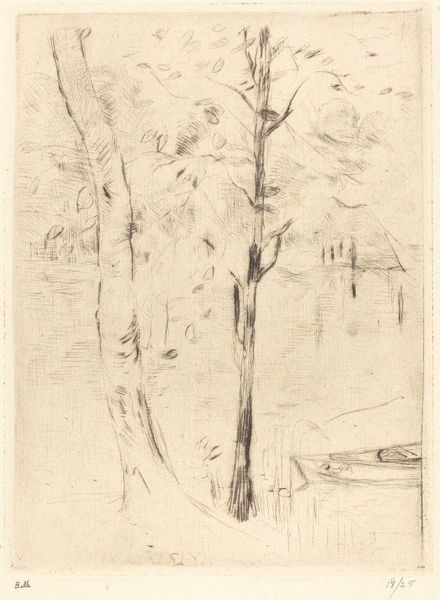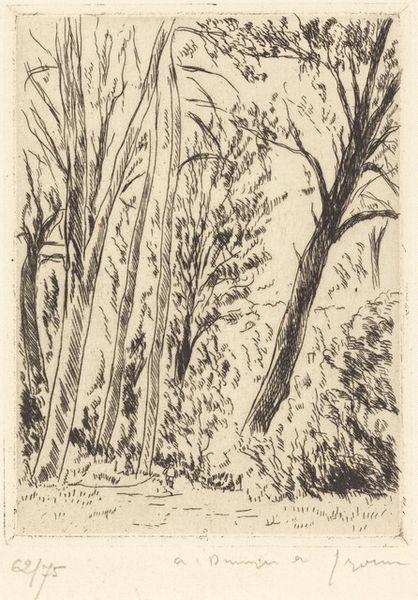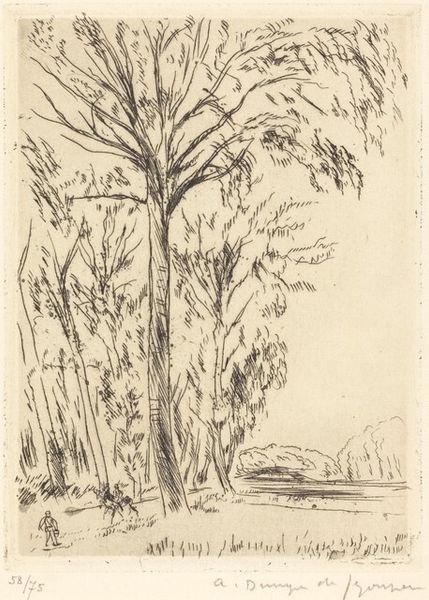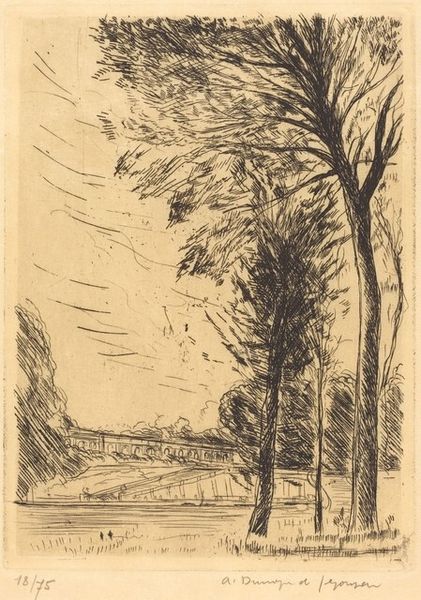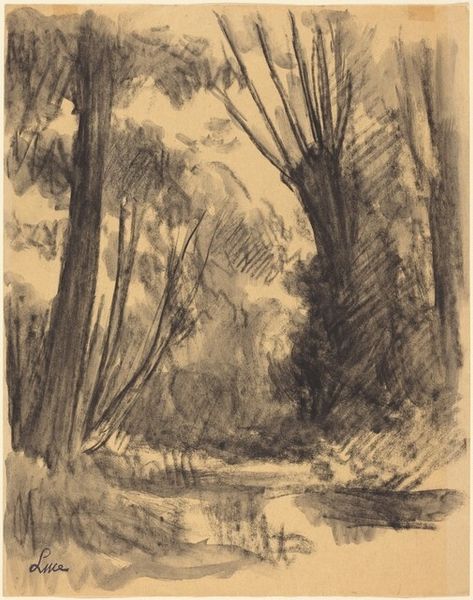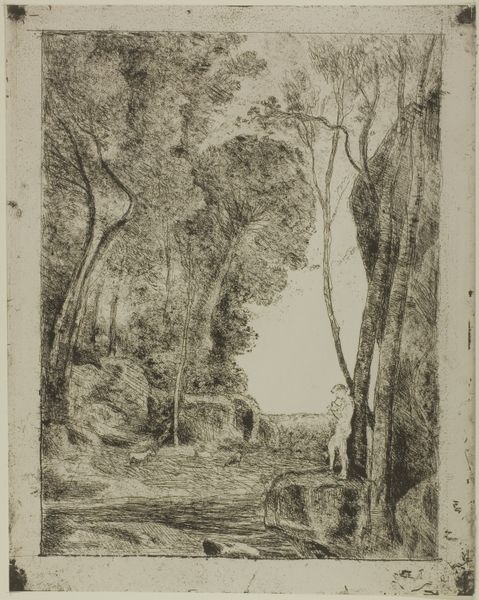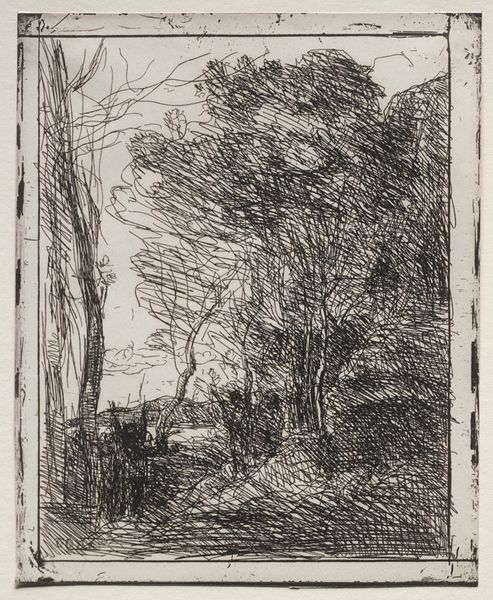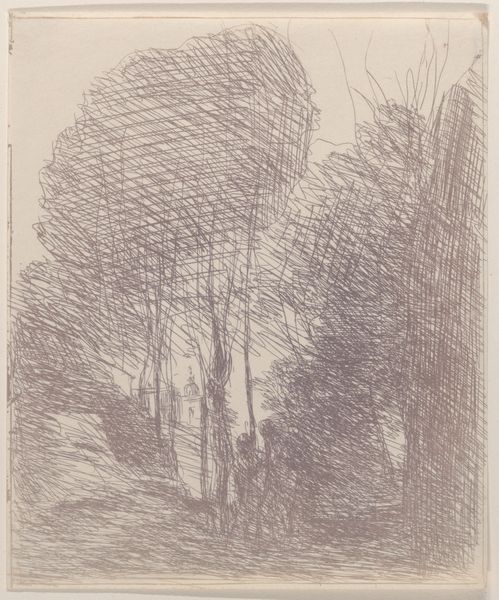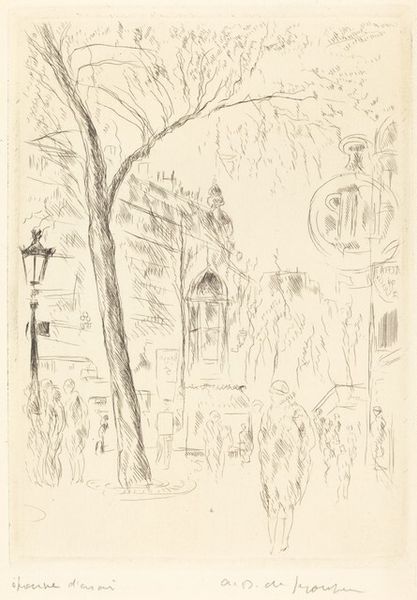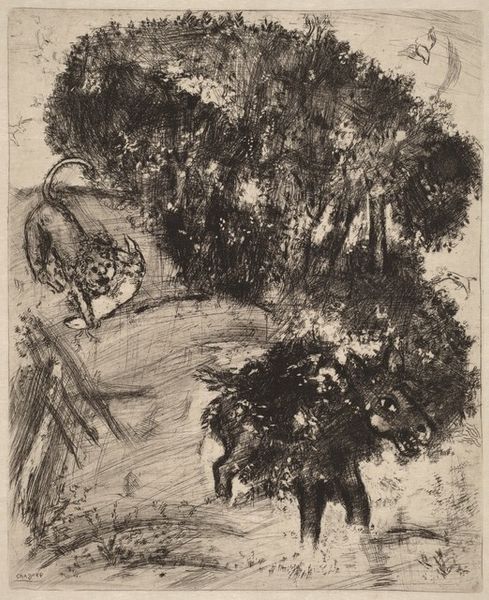
Statue in the Trees, Versailles (Versailles, la statue dans les arbres) 1924
0:00
0:00
print, etching
#
ink drawing
# print
#
etching
#
landscape
#
etching
#
modernism
Copyright: National Gallery of Art: CC0 1.0
Editor: So, this is André Dunoyer de Segonzac’s 1924 etching, "Statue in the Trees, Versailles." I’m struck by the starkness of the lines. The trees almost feel like bars enclosing this little structure in the center. What do you see in it? Curator: The framing, for sure. This piece, ostensibly about a picturesque garden, reads quite differently when viewed through a critical lens. Versailles itself embodies constructed power; a landscape designed to reinforce absolute authority. How might Segonzac's artistic choice – the density of the lines, that sense of confinement – reflect anxieties around established hierarchies in the interwar period? Does it resonate with broader feelings of disillusionment after the trauma of World War I, perhaps a critique of the opulence and privilege the Palace represented? Editor: I never thought about it that way. I was focused on the visual contrast between the open, sketchy areas and the denser, darker parts of the foliage. It felt almost purely aesthetic. Curator: And it *is* aesthetic. But consider the social history interwoven with landscape art. Think about who had access to these spaces, who controlled the narratives surrounding them. The statue becomes less a celebration of beauty and more a marker of control within a meticulously sculpted environment. Do you notice the absence of people? Who *isn't* in this picture? Editor: Now that you point that out, it definitely shifts my understanding. It makes the solitude feel… deliberate. It's a space curated for some and explicitly excluding others. Curator: Precisely! Art doesn't exist in a vacuum. By analyzing the context – the social, political, and economic forces at play – we uncover the powerful, often unspoken messages embedded within. What will you take away from that? Editor: I'll definitely pay closer attention to how social history affects even the seemingly simplest subjects of art. There is a hidden meaning there. Thank you.
Comments
No comments
Be the first to comment and join the conversation on the ultimate creative platform.

